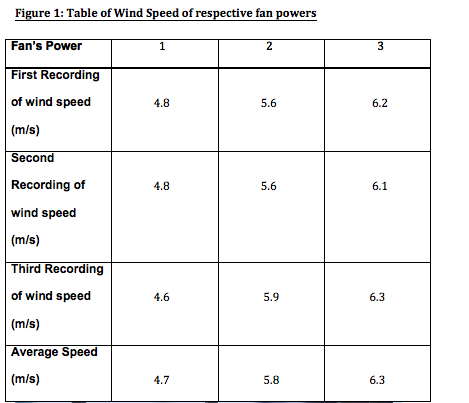1. Introduction
1.1 Background Research
First of all, we researched on what exactly wind is. Scientifically, wind is the air in kinetic motion which is caused by the uneven heating of the Earth’s surface by radiant energy from the sun (need.org, 2012). Since land heats and cools faster than water, it causes the uneven heating as the sun’s heating is absorbed at different rates on different surfaces of the Earth. The most ideal situation for the formation of local wind is an area where land and water meet as the air above land heats faster than the air above water. The warm air above the land would expand and since it would be less dense, it would rise into the atmosphere. The heavier, denser, cool air above the water would take the warm water’s place (need.org, 2012), creating convection current which will create wind. In the same way, the atmospheric winds that circle the Earth are created because the land near the equator is heated more by the sun than land near the North and South Poles (need.org, 2012).
Different wind have different speed so to measure the wind speed, a lab tool called, anemometer, is required. There are two types of anemometer. The first type is device that has three arms with cups at the end that spin on top of a shaft. The cups would catch the wind and spin the shaft and there would be a device that counts the number of rotation per minute. A display on the anemometer shows the speed of the wind. The second type of anemometer is a digital type. It records the speed of the spinning fan blade inside the anemometer.
Wind Chill factor is the phenomena which makes us feel colder in winter than the air temperature really is. This is because of the interaction of air temperature and wind on the human body that is already giving off heat (James P. Dildine, 1999). Both temperature and wind cause heat loss from body surfaces. Thus a combination of cold and wind makes a body feel colder than the actual temperature.
1.2 Research Question
1.2 Research Question
How does wind speed affect the rate of cooling?
1.3 Hypothesis
If the wind speed is higher, the object will cool faster.
1.3.1 Independent variable
1.3.2 Dependent variable
Temperature of water (°C)
1.3.3 Constants
- Volume of water
- Material of mug
- Temperature of surrounding air (ºC)
- Type of water
No comments:
Post a Comment